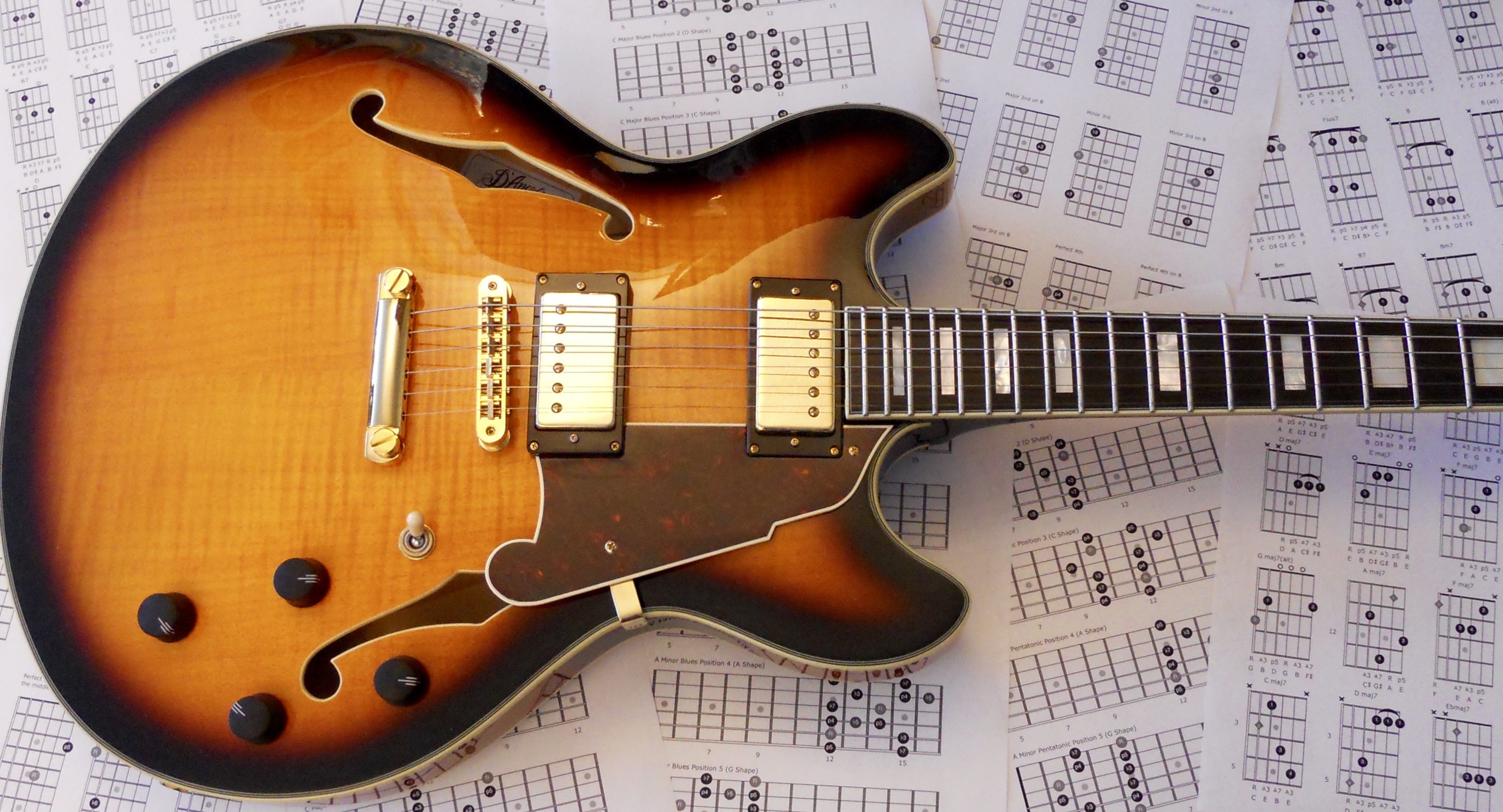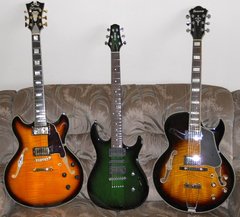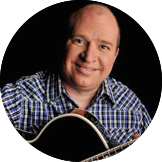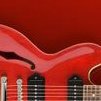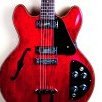-
Posts
316 -
Joined
-
Last visited
-
Days Won
40
Content Type
Profiles
Forums
Gallery
Events
Articles
Blogs
Downloads
Community Map
Everything posted by V7#5b9
-
This is something I had mentioned on the old forum. The resource is rather unconventional as it doesn’t use musical notation at all, but it is remarkable in the way it covers its contents. It makes you think and sometimes re-examine your approach to music. Things that I was vaguely aware of became much clearer. I also found new things that had never been explained in any other resources I’ve come across. Having said that, you may find some small inaccuracies or sometimes even disagree with the author. For instance, his circular harmonic scale chord progression chart is very useful, but he claims that a lot of musicians mistakenly think that the Circle of Fifths has something to do with chords and chord progressions. Well…, that’s a matter of interpretation. Nevertheless, I think it’s a resource worth looking into. It’s available in both digital and print formats. You can read about half of the contents online for free. Here’s the link to How Music REALLY Works!
- 5 replies
-
- music theory for
- songwriters
-
(and 3 more)
Tagged with:
-
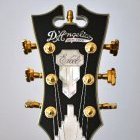
What strings on a hollowbody?
V7#5b9 replied to matonanjin's topic in Guitar Gear, Amps, Effects, Pedals
@matonanjin According to their PRS SETUP GUIDE the non-piezo hollow body models are factory set up with 10 - 46 gauge strings. -

Fender's New Eric Johnson Thinline Stratocaster
V7#5b9 replied to matonanjin's topic in Guitar Gear, Amps, Effects, Pedals
I had a Strat and it did feel heavy. I never liked the 6 in-line headstock and couldn’t quite get used to a fat neck. I have a lighter, Strat-like Carvin with H-S-H configuration and neck profile I like. Eric’s Thinline Strat looks cool and sounds nice, but you know what he said about developing your own tone. It’s 90% your technique.- 1 reply
-
- fender
- stratocaster
-
(and 3 more)
Tagged with:
-
@Steve Krenz Aside from the above-posted video, I haven’t heard of the guy’s website before. He may have good material, but according to his ABOUT page, Brian doesn’t seem to have solid credentials. I understand that you definitely don’t need twenty years of guitar experience, a music degree and a career as a performer to be a legitimate guitar teacher, but I personally gravitate to instructors with the best credentials. Would you recommend him to the community mainly on the basis of his material and presentation skills? I admit I have an ulterior motive for asking the question as I sometimes ponder over a similar idea.
-
And I’m sure the playability of the instrument is excellent, too. Congrats on acquiring this gorgeous piece of work. Enjoy!
-
“If it sounds good and if it feels good, then it IS good.” - Duke Ellington
-
Although I’m not too fussy about pick brands, I find that size, shape and thickness make a difference in tone or effect, as well as my playing comfort. I have a range of Dunlop picks and depending on the guitar and/or style I’m going for, I’ll use a different one. For instance, I use MAX-GRIP JAZZ III, ULTEX JAZZ III 2.0 or Big Stubby 3.0 for jazz guitar.
-
Let me add a slower shuffle or the slow blues and the straight rock ’n’ roll blues.
-
The blues shuffle is one example.
-
@John Wells I’m glad you’ve made it to the new forum. I hope you’re doing fine.
-
It’s simple. Bodies like rhythm, and they like syncing to it. That’s why you unconsciously tap your foot to music you like. You don’t think about it; in fact, it usually happens when you’re not thinking about it. Syncing up with a metronome or whatever delivers the beat or pulse is a physical thing. That’s why and how you feel it. And here’s the video for people who don’t have a facebook account.
-

Django’s Favorite Guitar at Acoustic Guitar
V7#5b9 replied to Dave White's topic in Guitar Open Talk
Thanks Dave. If you can endure 25 seconds before the English narration and translation kick in, you may find the following video interesting. -
-
-

Entry Level Nylon String Guitar
V7#5b9 replied to rkl312's topic in Guitar Gear, Amps, Effects, Pedals
@NeilES335 Do you remember this one? I think I posted it on the old forum at some point. It’s currently one of Taylor’s legacy models, but Long & McQuade may have two in stock in Ontario. I wouldn’t mind having one myself. It’s right around your price point. -

Live Lessons: January 23rd - Guitar Care with Greg Voros
V7#5b9 replied to Steve Krenz's topic in 2018 Live Lessons
@NeilES335 I’m sure Greg will have some words of wisdom on that, but you may find the following videos helpful as well:- 14 replies
-
- 1
-

-
- guitar care
- gruhn guitars
-
(and 2 more)
Tagged with:
-
@NeilES335 You’re welcome. I’m not a huge fan of Martino myself, but I try to listen to various jazz guitar artists as part of a learning experience. Pat has a unique perspective on the instrument, which he reveals in “The Nature of Guitar” he did for TrueFire.
-
In my vast array of music theory books Tom Kolb’s “MUSIC THEORY Everything You Ever Wanted to Know But Were Afraid to Ask” has its place. Tom’s main approach is based on brief conceptual descriptions and formulas. It covers a lot of information, but you may find it kind of dry. I use it mainly as an additional reference. If you want to get a relatively quick grasp of basic music theory and understand the big picture, I would recommend “The Everything Music Theory Book” by Marc Schonbrun. Marc’s easy and engaging language makes reading the book and learning theory enjoyable. It actually has a companion book by the same author: “The Everything Reading Music Book.” There is some overlap between the books, but they complement each other perfectly. Then, you will be able to tackle more advanced music theory books. Steve usually recommends: “Edly’s Music Theory for Practical People.” It’s very good as well. I hope this helps.
-
@Wim VD You’re welcome. I feel humbled by your favourable comment. I’ve never had the gift of being able to play by ear and now my condition isn’t ideal, either. I have to wear hearing aids and deal with tinnitus. Fortunately, these days the abundance of resources makes it possible to learn music theory thoroughly and compensate for the ear’s shortcomings to a substantial degree. My resource library is relatively big. I’m grateful to those who developed and codified the language of music.
- 8 replies
-
- 1
-

-
- chord tone
- chord scale
-
(and 2 more)
Tagged with:
-
@Wim VD The reason the chord tone approach sounds better to you is because you are using the harmonic framework of the progression. Chord tones are the safe, sweet notes the chords or arpeggios are made of. They are the notes you can hold or land on. When it comes to the seventh chords, the third and the seventh are the guide tones and you should target one of them when making the chord changes. Of course, the chord tones alone don’t make a great solo, but if you start with them, you will get the harmony into your ear and you will hear the chord changes. Then, you can start adding approach notes and here the devil is in the details that are way beyond the scope of a simple post. So you decided to focus on learning the arpeggios starting with the dominant 7th chords. That’s a good idea because all you need for a traditional 12 bar blues is this one type of chord. The harmonic simplicity and structural economy of the 12 bar blues makes it the perfect vehicle for tackling soloing and improvisation in the early stages. So again, you start with chord tones only, then you add approach notes thereby building your solo from the bottom up. You can learn the arpeggios in isolation or from the perspective of its parent scale. The mixolydian which can be thought of as a major scale with a lowered seventh is the parent scale for a dominant 7th chord. After you’ve completed Session 19, you may want to reach for a resource that thoroughly deals with soloing and improvisation in your chosen genre.
- 8 replies
-
- 2
-

-

-
- chord tone
- chord scale
-
(and 2 more)
Tagged with:
-
Thanks Neil! I listen to Virtuoso every now and then, too.
-
Although the following article discusses the concepts in the context of jazz, they do apply to other genres as well. Chord-Tone vs. Chord-Scale Soloing by Professor Hal Crook "For the past few decades or so, more and more jazz players have been using the chord-scale approach for soloing over chords in progressions. The chord-scale approach is based on the idea that if a chord is diatonic to a scale, then that scale can be used as a source to derive melody on that chord." You will find the full article at BERKLEE TODAY. PS Also see the sidebar at the end of the article
- 8 replies
-
- chord tone
- chord scale
-
(and 2 more)
Tagged with:
-
An Easy System To Memorize Every Major Scale For each major scale, memorize the altered notes (sharps or flats) only if they constitute the minority, otherwise memorize the naturals. For example, in the case of B major you would memorize that B and E are natural and that the rest are sharp. Next, simply recite the musical alphabet starting with B and make every note “sharp” except for B and E: B – C# -D# – E – F# – G# – A# Memorizing just B and E for the above, is much easier than having to memorize C#, D#, F# , G# and A#! Here is a list of the 12 major scales as they appear on the descending (counterclockwise) CIRCLE OF FIFTHS starting with C MAJOR and what to memorize: C MAJOR: All natural — C D E F G A B Major Scales With Flats: F MAJOR: memorize Bb, the rest are natural — F G A Bb C D E Bb MAJOR: memorize Bb and Eb, the rest are natural — Bb C D Eb F G A Eb MAJOR: memorize Eb, Ab and Bb, the rest are natural — Eb F G Ab Bb C D Ab MAJOR: memorize C, F and G, the rest are flat — Ab Bb C Db Eb F G Db MAJOR: memorize F and C, the rest are flat — Db Eb F Gb Ab Bb C Gb MAJOR: memorize F, the rest are flat — Gb Ab Bb Cb Db Eb F Major Scales With Sharps: B MAJOR: memorize B and E, the rest are sharp — B C# D# E F# G# A# E MAJOR: memorize E, A and B, the rest are sharp — E F# G# A B C# D# A MAJOR: memorize C#, F#, and G#, the rest are natural — A B C# D E F# G# D MAJOR: memorize F# and C#, the rest are natural — D E F# G A B C# G MAJOR: memorize F#, the rest are natural — G A B C D E F# For the enharmonic scales (C# or Db, F# or Gb and B or Cb) at the bottom of the Circle of Fifths, memorize: C# MAJOR: all are sharp — C# D# E# F# G# A# B# F# MAJOR: memorize B, the rest are sharp — F# G# A# B C# D# E# Cb MAJOR: all are flat - Cb Db Eb Fb Gb Ab Bb
-
“An Evening With Pat Martino” is a treat for any guitar student who is interested in tackling jazz guitar. I hope you will find it inspirational, educational and motivational. The preceding player’s profile comes from the “20th Century JAZZ GUITAR” free e-book by Richie Zellon, and serves as a brief historical background regarding the artist. “Pat Martino BEBOP, HARD BOP, POST-BOP Born Pat Azzara in South Philadelphia, Martino began playing professionally in 1961 at age 15. Throughout his early career he worked as a sideman with saxophonists Willis Jackson and Eric Kloss, as well as various organists including Jack McDuff, Jimmy Smith, Don Patterson and Richard “Grooves” Holmes. Martino made his recording debut as leader in 1967 with the album “El Hombre” on Prestige Records. In 1980 Martino suffered a nearly fatal brain aneurysm which resulted in the loss of his memory and playing abilities. With the help and encouragement of family and friends in conjunction with his old recordings, he was able to regain his cognitive abilities and eventually made a full recovery. He resumed his recording career in 1987 with the recording “The Return” and has kept a busy performing schedule ever since.”

